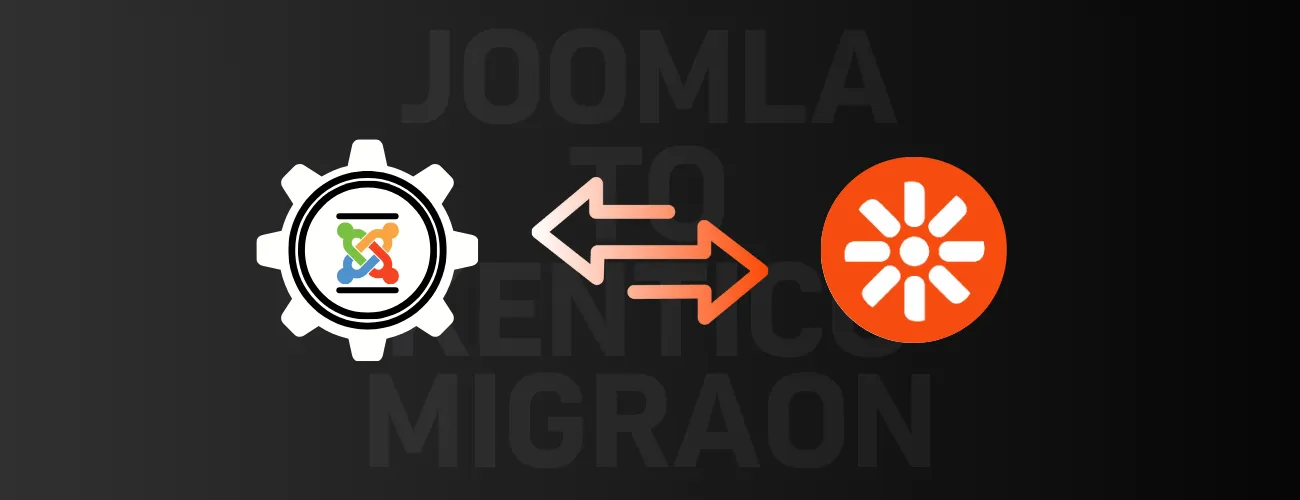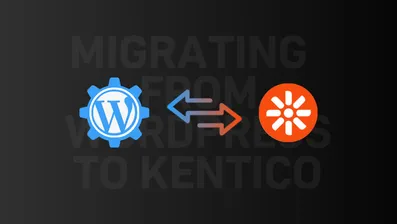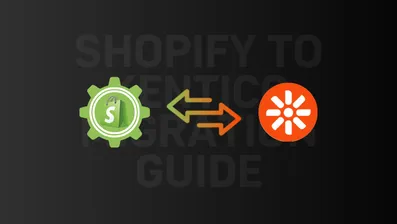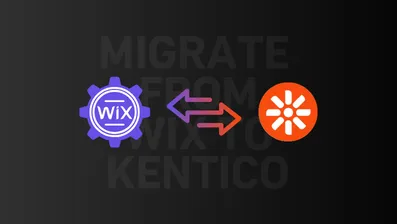Have you ever felt like your current CMS is holding you back?
Choosing the right content management system (CMS) can make or break how efficiently your business operates online. Joomla has served many well, but as businesses grow, so do their needs-and that’s where Kentico CMS steps in.
Kentico isn’t just a CMS; it’s a partner in growth. It offers robust tools, enhanced security, and seamless integrations to help you stay ahead of the curve.
If you’ve been considering migrating from Joomla to Kentico, you’re not just making a switch-you’re taking a step toward a future-proof solution.
Wondering how Kentico can meet your unique needs or what the migration process looks like? Let’s dig deeper and see why this move could transform how you manage your digital presence.
Why Consider Migrating from Joomla to Kentico?
Let’s face it-Joomla has done its job. But is it still ticking all your boxes?
Over time, you might have noticed limitations. Maybe the plugin updates are starting to feel like a patchwork fix. Or perhaps scaling your site feels more like climbing a mountain than taking a smooth ride.
That’s where Kentico shines.
Kentico isn’t just about managing content; it’s about giving you the tools to build meaningful connections with your audience. Its built-in marketing features, personalization options, and e-commerce capabilities make it a true all-rounder.
Imagine having a CMS that combines flexibility, scalability, and ease of use. A solution that supports your growth without breaking a sweat. With Kentico, you get all this and more, making it a strong contender for your next CMS.
So, why stick with “good enough” when you can switch to a CMS that grows with you?
The Migration Process: A Step-by-Step Guide to Moving from Joomla to Kentico
Migrating from Joomla to Kentico may seem complex, but with the right steps, you can ensure a smooth and successful transition. Here’s a detailed breakdown of the migration process:
Step1: Evaluate Your Existing Joomla Setup
Before you start, take stock of your current website.
- Inventory Content: List all the pages, posts, images, and other assets on your Joomla site.
- Analyze Plugins: Identify which Joomla extensions and plugins you use and determine if there are equivalent features in Kentico or if customization will be needed.
- Performance Metrics: Note your current website’s performance and SEO rankings to set benchmarks for the new site.
Step 2: Define Your Migration Goals
Ask yourself: What do you want to achieve with this migration?
- Do you need better performance, more scalability, or enhanced security?
- Are you planning to redesign your website during the migration?
Setting clear goals helps you make strategic decisions throughout the process.
Step 3: Backup Your Joomla Website
Backing up is non-negotiable.
- Use Joomla’s backup tools or plugins like Akeeba Backup to create a complete copy of your site.
- Store backups securely to ensure you can restore data if anything goes wrong during migration.
Step 4: Plan the Structure of Your Kentico Website
Now it’s time to map out how your content will look in Kentico.
- Content Mapping: Match your Joomla content (articles, categories, etc.) to Kentico’s structure.
- URL Mapping: Plan how your Joomla URLs will redirect to the new Kentico URLs. This is crucial for SEO.
- Design & Layout: Decide whether to replicate your current design or create a fresh look using Kentico’s templates and themes.
Step 5: Set Up Your Kentico Environment
Install and configure Kentico to suit your needs.
- Choose the hosting environment (on-premise or cloud-based).
- Configure essential settings, including language, time zone, and security features.
- Install necessary modules or extensions that replicate or enhance your Joomla features.
Step 6: Migrate Content and Data
This is the core of the migration process.
- Automated Tools: Use tools like Kentico Migration Toolkits or custom scripts to transfer data.
- Manual Adjustments: Review and manually transfer content that doesn’t fit automated processes.
- Data Validation: Verify that all content, media, and metadata (e.g., SEO tags, titles) are intact.
Step 7: Implement SEO Best Practices
Preserving SEO during migration is vital.
- Create 301 redirects for all old Joomla URLs to their new Kentico equivalents.
- Transfer metadata, alt tags, and structured data.
- Optimize your new Kentico site for performance and mobile-friendliness to maintain or improve rankings.
Step 8: Test the New Website
Testing ensures your new Kentico site functions correctly.
- Content Check: Verify that all content has migrated accurately.
- Functionality Test: Test all forms, buttons, and interactive features.
- Performance Test: Assess loading speed, responsiveness, and overall performance.
- SEO Review: Run audits using tools like Google Search Console to catch SEO-related issues.
Step 9: Launch Your Kentico Website
It’s time to go live!
- Schedule the launch during off-peak hours to minimize disruption.
- Monitor the site closely during the launch to address any issues quickly.
- Announce your new website to your audience and guide them to explore its new features.
Step 10: Post-Migration Optimization and Support
The migration doesn’t end at launch.
- Gather feedback from users to identify areas for improvement.
- Monitor analytics to ensure the new site performs as expected.
- Work with your Kentico development team for ongoing support and updates.
By following these detailed steps, you can make the transition from Joomla to Kentico seamless and successful. With proper planning and execution, you’ll have a powerful CMS ready to support your business’s growth.
Challenges in Joomla to Kentico Migration (and How to Overcome Them)
Every journey has its bumps, and migrating your CMS is no exception. But don’t worry-these challenges aren’t showstoppers. With a clear approach, you can tackle them head-on. Let’s take a look.
1. Data Compatibility Issues
When moving from Joomla to Kentico, one common concern is whether your data will translate smoothly. The structures of the two platforms differ, and there’s a risk of losing formatting or relationships between data.
How to Solve It: Use migration tools or hire experts who specialize in Joomla to Kentico migration. These tools ensure your content, media, and user data are properly mapped and transferred without hiccups.
2. SEO Preservation
You’ve worked hard to build your SEO rankings-losing them during migration would feel like starting over. Redirects, meta tags, and structured data often don’t carry over automatically.
How to Solve It: Before migration, create a detailed SEO checklist. Set up 301 redirects for old URLs, transfer all meta tags, and test your new Kentico site for SEO performance post-migration.
3. Minimal Downtime
Imagine your website being down during the switch. It’s a nightmare for both you and your users, especially if you rely on online traffic for business.
How to Solve It: Plan the migration during off-peak hours or use a staging environment. This ensures your users experience little to no downtime while the switch is underway.
4. User Training
Switching to a new platform means learning how to use it effectively. Without proper training, your team might feel lost navigating Kentico’s new environment.
How to Solve It: Take advantage of Kentico’s extensive documentation and training resources. Schedule workshops or webinars for your team to familiarize themselves with the platform’s features.
5. Post-Migration Bugs
Even with meticulous planning, minor glitches like broken links or missing files can creep in.
How to Solve It: Conduct thorough testing before launching the site. Address any issues immediately, and schedule a follow-up review after going live to catch anything that might have slipped through.
See how manageable these challenges are with the right preparation? Now that we’ve covered potential roadblocks, let’s look at the benefits of making the switch to Kentico!
Key Benefits of Migrating to Kentico
Switching to Kentico isn’t just a migration-it’s an upgrade. Let’s explore how this CMS can take your online presence to new heights.
► All-in-One Platform
Are you juggling multiple tools for content management, marketing, and e-commerce? Kentico eliminates that hassle. It combines these features under one roof, streamlining your workflows and saving you time.
► Enhanced Security
With Kentico, you’re not just keeping your data safe-you’re giving your users peace of mind.
Its advanced security features, including role-based access and GDPR compliance tools, make it a reliable choice for businesses that take privacy seriously.
► Personalization at Scale
What if you could deliver a unique experience to every visitor on your site? Kentico makes this possible with its powerful personalization tools, helping you connect with your audience in meaningful ways.
► Built-In Marketing Tools
Why pay for third-party marketing tools when Kentico offers everything you need? From email campaigns to lead scoring, it’s a full suite of tools designed to help you nurture and convert leads more effectively.
► Scalability for Growing Businesses
Whether you’re a small business or an enterprise, Kentico adapts to your needs. Its flexible architecture ensures you can scale seamlessly as your business grows, without worrying about outgrowing the platform.
► Improved Performance
Tired of dealing with slow loading times or clunky interfaces? Kentico optimizes performance, providing a faster, smoother experience for both you and your users.
Why Choose DotStark for Your Joomla to Kentico Migration?
Making the move to Kentico is a big step, and you shouldn’t have to navigate it alone. That’s where DotStark comes in.
With years of experience in CMS migrations, we specialize in making your transition from Joomla to Kentico seamless and stress-free. From planning and data migration to final deployment, we handle every step with precision and care.
Our team doesn’t just focus on getting the job done-we tailor the process to meet your unique business needs. Whether it’s preserving your SEO, customizing Kentico’s features, or ensuring your data’s safety, we prioritize what matters most to you.
What sets us apart? Our commitment to delivering solutions that are efficient, scalable, and future-proof. Plus, we’re here for you even after the migration with ongoing support to help you make the most of Kentico’s capabilities.
Ready to work with a team that puts your goals first? DotStark is the Kentico development company you can count on. Let’s build something great together.
Conclusion: The Next Step Toward a Better CMS
Switching from Joomla to Kentico isn’t just a technical move-it’s a strategic decision for the future of your business. With Kentico’s powerful tools, enhanced security, and scalability, you’re setting yourself up for long-term success.
Yes, the migration process requires planning and effort, but the results are worth it. A faster, more reliable, and flexible CMS awaits, ready to support your business goals.
And remember, you don’t have to do it alone. DotStark is here to guide you every step of the way, ensuring your migration is smooth, secure, and tailored to your needs.
So, are you ready to take the leap and elevate your CMS experience? Let’s get started today!
Frequently Asked Questions
It’s the process of transferring your content, data, and functionalities from Joomla CMS to Kentico CMS, ensuring a seamless transition with minimal disruption.
The timeline depends on the complexity of your website, the amount of data, and the level of customization needed. On average, it can take a few weeks to a couple of months.
Not if you take the right steps! By setting up proper redirects, transferring meta tags, and testing your SEO performance post-migration, you can maintain or even improve your rankings.
While Kentico may not support Joomla plugins directly, equivalent functionalities can be built or configured using Kentico’s tools and features.
DotStark brings expertise, precision, and a personalized approach to ensure your migration is seamless. With our support, you’ll enjoy a fully optimized Kentico experience tailored to your business needs.












 +91 9680599916
+91 9680599916
 vanshika@dotstark.com
vanshika@dotstark.com
